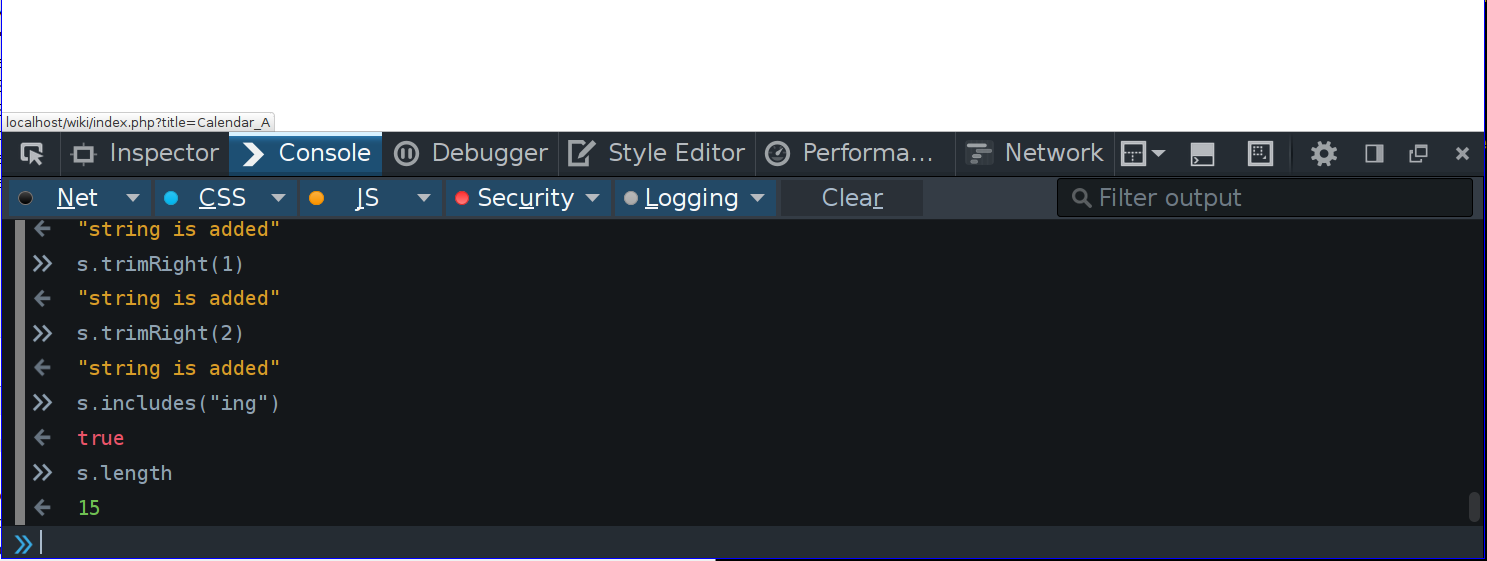Courses/Design & Technique-Essential Web Design/Q2/02
Javascript (JS)
what is JS?
JS is a simple programming language that runs inside webpages when the pages are loaded in the users' browser.
In the complex organism that can be a web-page, you have:
- HTML - content & structure
- CSS - look
- Javascript - (artificial) intelligence.
JS = a language
Javascript is a programming language.
Like natural languages (English, Dutch, Mandarin, etc) it has rules, words, and special characters (like {,[,$), each with specific meanings withing the language, which we'll have to follow in order to talk in JS.
JS in a HTML page
<script> alert('Welcome to this page'); </script>
- external Javascript file file
making statements
JS statements are like phrases, that do very specific tasks.
Each statement has to be terminated with ";", like the above alert('Welcome to this page');
the browser console
Essential to prototype, and debug your JS code.
Data types
JS has 4 essential data-types, that is types of information:
- Numbers: both positive or negative, integer or floating. E.g.
1, 0.2, -10- Numbers' operations: Numbers can be added, subtracted, multiplied, and perform a number of other math operations.
1/3
- Numbers' operations: Numbers can be added, subtracted, multiplied, and perform a number of other math operations.
- Strings: essentially words or sentences. They are easy identified since they are inside quotation-marks (
"or'). E.g. "I am a string", 'so am I', "900 - numbers inside quotations are also strings"- Strings can be added,
"string " + "is added"; - change to upper/lower case
"string".toUpperCase(); - asked it includes a given string
"string".includes("ing"); - asked how long is the string
"string".length
- Strings can be added,
- Booleans: consists of simply two values: true or false
- lists or arrays
List or arrays are simply collections of multiple "things", which can be numbers, strings or booleans. And are always surrounded by [ ] (square brackets).
["apples", "bananas", 14, 0, false] A list containing numbers, strings and booleans
- lists can be: asked what it contains in each position
["apples", "bananas", 14, 0, false][0]
- sorted (put in order)
["apples", "bananas", 14, 0, false].sort() or reversed ["apples", "bananas", 14, 0, false].reverse()
- added a new item
["apples", "bananas", 14, 0, false].push('new item')
- removed the last item
["apples", "bananas", 14, 0, false].pop(), or first item ["apples", "bananas", 14, 0, false].shift()
